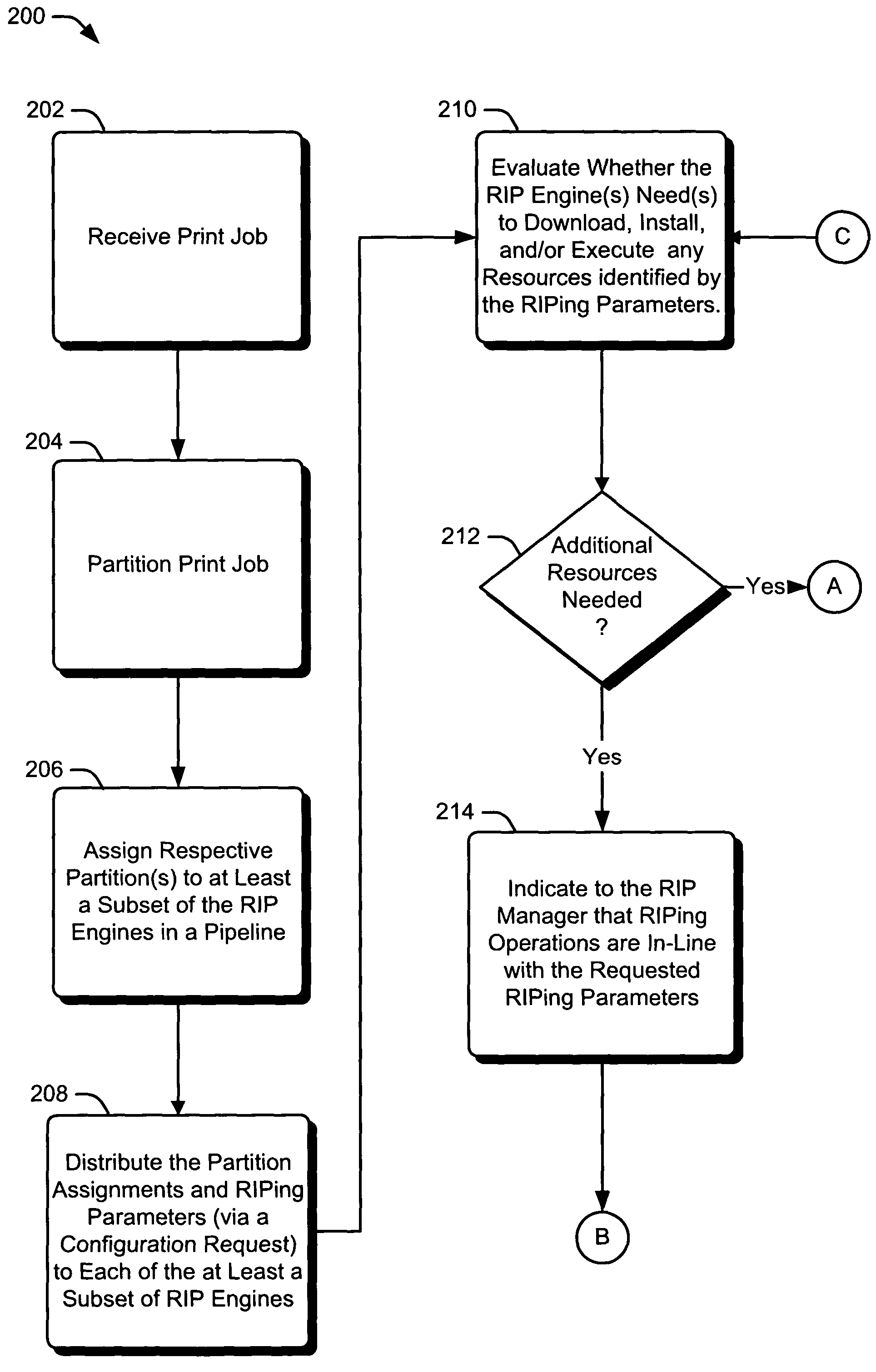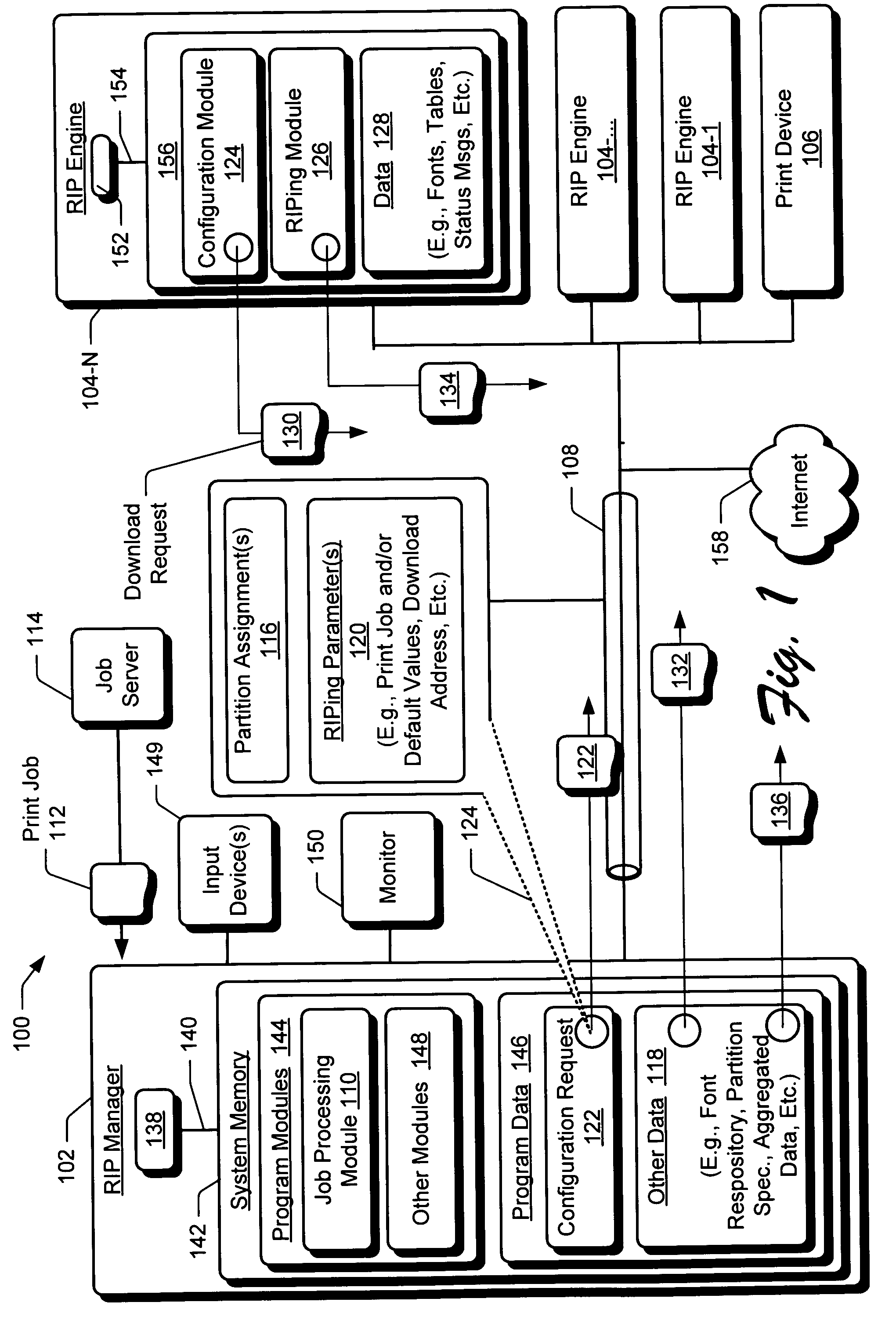Automatically configuring a raster image processor
a raster image processor and automatic configuration technology, applied in the field of image processing, can solve the problems of substantially limited print shops, fast print job turn-around time, and substantial problem in techniqu
- Summary
- Abstract
- Description
- Claims
- Application Information
AI Technical Summary
Problems solved by technology
Method used
Image
Examples
Embodiment Construction
[0014] An Exemplary Operating Environment
[0015] Turning to the drawings, wherein like reference numerals refer to like elements, the invention is illustrated as being implemented in a suitable computing environment. FIG. 1 is an exemplary suitable computing environment 100 within which systems, apparatuses and methods to configure a raster image processor (RIP) engine may be implemented. In particular, the system of FIG. 1 provides for cooperative image processing across heterogeneous RIP engines. Multiple RIP engines that respectively implement different RIPing algorithms / resources, etc., with respect to one another are often referred to as being “heterogeneous” with respect to one another. Exemplary computing environment 100 is only one example of a suitable computing environment and is not intended to suggest any limitation as to the scope of use or functionality of systems and methods the described herein.
[0016] Although not required, the invention will be described in the gen...
PUM
 Login to View More
Login to View More Abstract
Description
Claims
Application Information
 Login to View More
Login to View More - R&D
- Intellectual Property
- Life Sciences
- Materials
- Tech Scout
- Unparalleled Data Quality
- Higher Quality Content
- 60% Fewer Hallucinations
Browse by: Latest US Patents, China's latest patents, Technical Efficacy Thesaurus, Application Domain, Technology Topic, Popular Technical Reports.
© 2025 PatSnap. All rights reserved.Legal|Privacy policy|Modern Slavery Act Transparency Statement|Sitemap|About US| Contact US: help@patsnap.com



